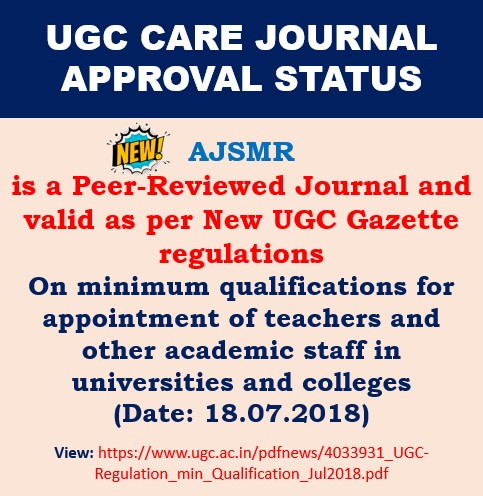Original Research Article I Volume 4 I Issue 1 I 2018
Seaweeds and It’s Utility
S. Kameswaran
The American Journal Science and Medical Research; 4(1); 15-19
DOI:http://dx.doi.org/10.17812/ajsmr4104
Abstract:
The unprecedented population growth, unchecked industrial expansion and urbanization have diverted the human attention for ocean exploitation. Among its vast living resources, seaweeds are one of the best sources of food, fodder, fertilizer, medicine and chemicals. Seaweeds produce a varied and versatile biomass useful for multiple applications. They can be used in a broad variety of formats (e.g. fresh, dried, powder or flakes, salted, canned, liquid extracts or as prepared foods) for direct human consumption or processed into food additives and nutraceuticals, feeds, fertilizers, biofuels, cosmetics and medicines, amongst others. The macrophytic benthic marine algae, often called as seaweeds are used as food in Far East Countries since ancient times. According to FAO, over 30 countries around the world harvest annually about 3.8 million tones weight of seaweeds. Of this total, half of the quantity is utilised for human consumption and the rest for production of industrially important phycocolloids such as agar, carrageenan, and algin. The main types of edible seaweeds are Laminaria, Undaria, Porphyra and Monostroma. Almost all the edible seaweeds are cultivated on commercial scale especially in China, Japan and Korea to meet the market demands. The Porphyra cultivation in Japan is the World’s biggest seaweed industry with a turnover of more than US $ 1.5 billion per annum.
Keywords:
Seaweeds, algae, phycocolloids, laminaria, biofuels, fertilizer
References:
[1]. Anis, M., Ahmed, S. &Hasan, M. (2017). Algae as nutrition, medicine and cosmetic: the forgotten history, present status and future trend. World Journal of Pharmacy and Pharmaceutical Sciences, 6: 1934–1959.
[2]. ARPA-e. (2016). Macroalgae research inspiring novel energy resources (MARINER). U.S. Department of Energy. Available at https://arpa-e-foa.energy-gov.
[3]. Balboa, E.M., Conde, E., Soto, M.L., Pérez-Armada, L. &Domínguez, H. (2015). Cosmetics from marine sources. In Handbook of Marine Biotechnology (Kim, S.K., editor), 1015–1042. Springer, Berlin.
[4]. Bjerregaard, R., Valderrama, D., Radulovich, R., Diana, J., Capron, M., Mckinnie, C.A., Cedric, M., Hopkins, K., Yarish, C., Goudey, C. & Forster, J. (2016). Seaweed aquaculture for food security, income generation and environmental health in Tropical Developing Countries. World Bank Group, Washington, DC.
[5]. Buschmann, A.H., Gonzalez, M. del C.H. & Varela, D. (2008). Seaweed future cultivation in Chile: perspectives and challenges. International Journal of Environment and Pollution, 33: 432–456.
[6]. Chapman, A.S., Stévant, P., Larssen, W.E., Stévant, P. &Larssen, W.E. (2015). Food or fad? Challenges and opportunities for including seaweeds in a Nordic diet. Botanica Marina, 58: 423–433.
[7]. Chapman, V.J. and Chapman, D.J. 1980. Seaweeds and their uses. Published by Chapman and Hall, New York, USA. 334p.
[8]. Chopin, T., Buschmann, A.H., Halling, C., Troell, M., Kautsky, N., Neori, A., Kraemer, G.P., ZertucheGonzález, J.A., Yarish, C. &Neefus, C. (2001). Integrating seaweeds into marine aquaculture systems: a key toward sustainability. Journal of Phycology, 37: 975–986.
[9]. Cornish, M., Critchley, A. &Mouritsen, O. (2017). Consumption of seaweeds and the human brain. Journal of Applied Phycology. doi: 10.1007/s10811-016- 1049-3.
[10].De Silva, S.S. 1992. Tropical Mariculture. Academic Press, New York...
Article Dates:
Received: 21 January 2018 ; Accepted: 25 February 2018 ; Published: 18 March 2018
How To Cite:
http://dx.doi.org/10.17812/ajsmr4104 Received : 21January, 2018 Accepted; 25February 2018 Available online : 18March 2018



